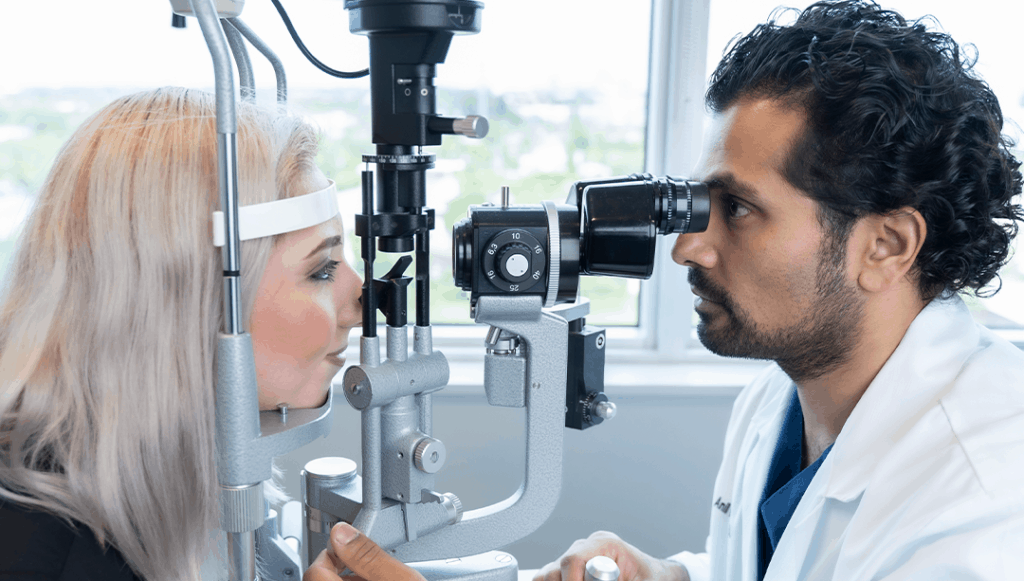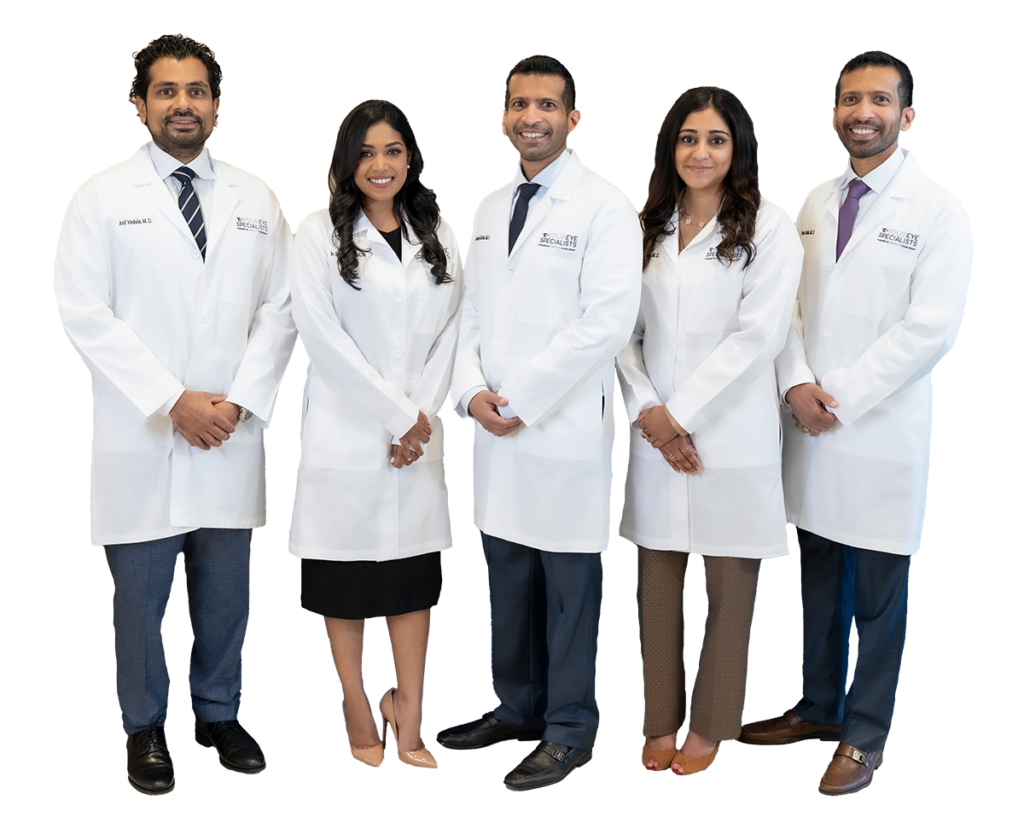Affordable LASIK Treatment Center South Florida
LASIK has quickly become the procedure of choice for most patients because they recover quickly and have fewer side effects and complications than with other methods of vision correction.
One of the most popular ways to correct vision is with a procedure called LASIK (laser in-situ keratomileusis), which uses an excimer laser to change the curvature of the cornea (outer window of the eye).

Are you a candidate for LASIK?
Find out in under 5 minutes with this simple quiz.
Most LASIK patients notice a significant improvement in their vision soon after surgery. Our LASIK center can remove tissue within the cornea to treat low to high levels of nearsightedness, farsightedness, and astigmatism.
Nearsightedness, also known as myopia, is a common type of refractive error where close objects appear clearly, but distant objects appear blurry. Nearsightedness develops in eyes that focus images in front of the retina instead of on the retina, which causes blurred vision. This occurs when the eyeball becomes too long and prevents incoming light from focusing directly on the retina. An abnormal shape of the cornea or lens can also cause nearsightedness.
Farsightedness or hyperopia is a vision condition in which distant objects are usually seen clearly, but close ones do not come into proper focus.
Farsightedness occurs if your eyeball is too short or the cornea has too little curvature, so light entering your eye is not focused correctly.
Astigmatism is a vision condition that causes blurred vision due either to the irregular shape of the cornea, the transparent front cover of the eye, or sometimes the curvature of the lens inside the eye. An irregular shaped cornea or lens prevents light from focusing properly on the retina, the light-sensitive surface at the back of the eye. As a result, vision becomes blurred at any distance.
Your eye surgeon will use the surgical tool known as a microkeratome or femtosecond laser to create a circular incision in your cornea. This incision is then folded back, allowing the surgeon to access the corneal tissue with an excimer laser. For nearsighted people, the goal is to flatten the cornea; farsighted people, on the other hand, require a steeper cornea. For patients who have astigmatism, the end goal of the surgery is to smooth an irregular cornea into a standard shape.
- LASIK works – in most cases, patients experience fully corrected vision.
- The procedure itself is relatively fast and painless.
- Patients recover from LASIK surgery quickly.
- It’s instantly gratifying – vision is corrected almost immediately, post-surgery.
- After undergoing LASIK surgery, most patients will not need to wear glasses or contact lenses ever again.
Would you like to hear more about the benefits of LASIK? Contact Your Eye Specialists today at 954-452-9922 to schedule a consultation with our eyecare experts.
Currently, around one in three people will suffer from astigmatism during their lifetime. Despite this startling statistic, many would be surprised to learn of someone close to them suffering from the condition. Most people misunderstand astigmatism, despite its commonness. Furthermore, many don’t know that LASIK surgery can treat the disease effectively.
Depending on the type and severity of the astigmatism, laser eye surgery (or LASIK) can either treat the symptoms or completely clear up a patient’s vision. LASIK works by reshaping the inner layer of the cornea. This corrects the astigmatism. Before conducting the procedure, however, the doctor must determine which type of astigmatism the patient suffers from. After the procedure, most patients notice immediate results. It may take a few days, or a week at most, to notice the full results. Over time, the patient’s vision will continue to improve significantly.
In a LASIK procedure, the eye surgeon creates a flap of corneal tissue using a laser. This does not happen in a PRK. Instead, the surgeon completely removes the outer layer of the cornea to expose a significant area where the laser may effectively reshape the cornea. For people whose eyes do not meet specific the criteria for LASIK, PRK is a better option. Alternatively, during LASIK surgery, a computer-controlled laser reshapes the layers of the cornea to correct imperfections in curvature, which can distort or blur vision. The surgeon then puts this flap back into place and allows the eye to heal.
The cost for laser eye surgery depends on numerous factors and can vary significantly. Please contact us for our pricing. High-quality LASIK surgery, however, will cost more than a few hundred dollars for a laser eye procedure, however; with this type of surgery, it is best to make the investment.
At Your Eye Specialists, our experienced eye doctors will sit down with you and discuss payment options and exact costs for laser eye surgery. You will receive a quote for our services before any work begins, in order to ensure that you fully understand both the fees and the procedure. This is the time to ask any questions you may have, so that you understand the investment you are about to make. When all is said, you really cannot put a price on clear vision!
LASIK eye surgery, like any eye surgery, comes with risks. These include:
- Under Corrections – The laser may possibly remove too much tissue from the cornea. An under correction, however, is easier to repair than an overcorrection.
- Return to Pre-Surgery Vision – Over time, your vision may return to its pre-surgery level as a result of abnormal healing, pregnancy, or hormonal imbalances.
- Vision Loss –Some patients may not see as sharply or as clearly as before due to surgical complications. On extremely rare occasions, patients may experience a complete loss of vision
- Glare or Double Vision – Following laser eye surgery, patients may experience difficulty seeing at night, and notice a glare or double vision.
- Dry Eyes – LASIK commonly causes a temporary decrease in tear production. For the first few months, patient’s eyes may feel dry as they begin the healing process.
Say YES to South Florida’s Top 24/7 LASIK Center
Come into one of our South Florida Offices for a free LASIK consultation to see if you are a candidate. We have many financing options available in our office – just ask! To easily schedule your appointment, fill out our online contact form.
What People Are Saying About Us
Trust Your Vision to South Florida’s Premier Eye Doctors
Saying YES is all it takes!


